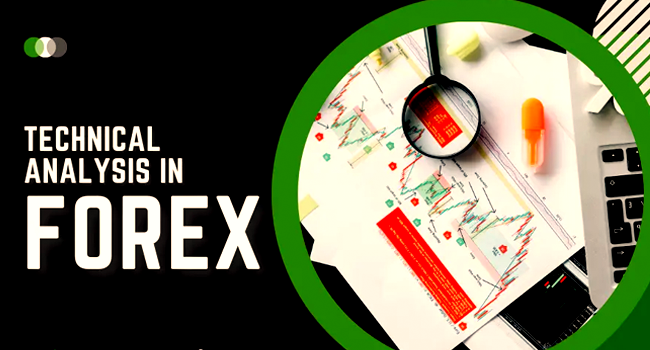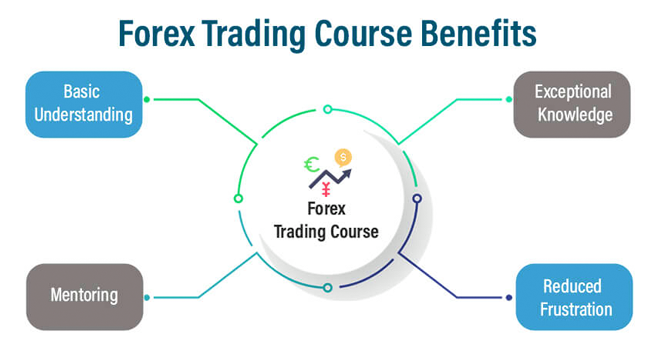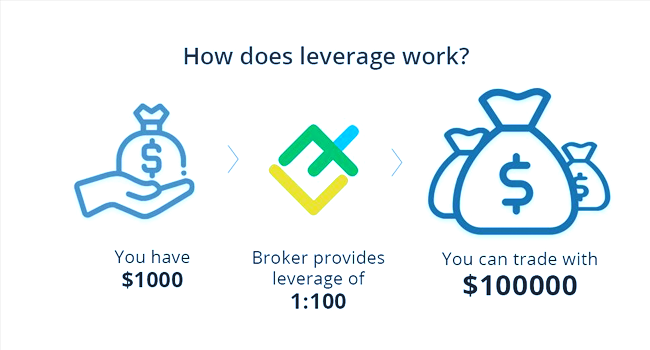Forex trading, or foreign exchange trading, is a decentralized global market where currencies are bought and sold. It is a highly liquid and volatile market, attracting millions of traders worldwide. In this fast-paced environment, traders often rely on various tools and indicators to make informed trading decisions. Among these tools,
technical indicators are crucial in analyzing price movements and identifying potential trading opportunities. In this article, we will explore the significance of technical indicators in forex trading and how they can assist traders in making informed decisions.
Technical indicators are mathematical calculations applied to historical price and volume data to provide insights into the direction and strength of market trends. They help traders analyze market dynamics, identify potential entry and exit points, and predict future price movements. These indicators are based on the assumption that historical price patterns tend to repeat themselves, allowing traders to anticipate future price movements.
One of the critical roles of technical indicators is to help traders identify trends in the forex market. Trend-following indicators, such as moving averages, help traders determine the direction of the prevailing trend. Moving averages calculate the average price over a specified period, smoothing out short-term fluctuations. By plotting moving averages on a price chart, traders can identify whether the market is in an uptrend, downtrend, or ranging phase. This information helps traders align their trading strategies with the prevailing market trend.
Another role of technical indicators is to provide traders with signals for potential entry and exit points. Oscillators, such as the Relative Strength Index (RSI) and the Stochastic Oscillator, are commonly used to identify overbought and oversold conditions in the market.
When an oscillator reaches extreme levels, it suggests that the market may be due for a reversal. Traders can use these signals to enter or exit positions, taking advantage of potential price reversals.
Additionally, technical indicators can assist traders in assessing the strength of price movements and confirming trading signals. Volume indicators, such as the On-Balance-Volume (OBV) and the Accumulation/Distribution (A/D) line, provide insights into the buying and selling pressure in the market. The high trading volume during price advances indicates strong buying interest, while high volume during price declines suggests intense selling pressure. By analyzing volume patterns alongside price movements, traders can validate the strength of trends and identify potential trend reversals.
Furthermore, technical indicators can be combined to create trading strategies and systems. Traders often use a combination of indicators to filter out false signals and increase the probability of successful trades. For example, a trader may use a moving average crossover strategy, where a shorter-term moving average crosses above or below a longer-term moving average to generate buy or sell signals. By combining different indicators and adjusting their parameters, traders can customize their trading strategies to their preferences and style.
It is important to note that technical indicators are not infallible and should be used in conjunction with other forms of analysis. They provide valuable insights into market trends and potential trading opportunities but are not foolproof predictors of future price movements. Forex traders should also consider fundamental analysis, which examines economic and geopolitical factors and risk management techniques, to make well-rounded trading decisions.
Furthermore, technical indicators offer various options for different trading styles and preferences. Countless technical indicators are available, each with its unique calculation method and interpretation. Traders can choose from simple indicators, such as moving averages and trendlines, to more complex ones, like the Ichimoku Cloud or Bollinger Bands. The availability of multiple indicators allows traders to customize their analysis according to their specific trading strategies and objectives.
Moreover, technical indicators can be applied to different timeframes, ranging from short-term charts like 1-minute or 5-minute intervals to longer-term charts like daily or weekly intervals. This versatility enables traders to adapt their trading strategies to various market conditions and time horizons. Short-term traders may focus on intraday price movements and use indicators that provide faster signals. In contrast, long-term traders may analyze broader market trends and use arrows with more extended calculation periods.
It is worth noting that technical indicators should not be used in isolation but in conjunction with other forms of analysis. While technical indicators excel at analyzing price movements and providing insights into market trends, they do not account for fundamental factors that can significantly impact currency values. Economic data releases, geopolitical events, and central bank announcements can all substantially affect the forex market. Therefore, traders should consider incorporating fundamental analysis into their approach to understand market dynamics comprehensively.
Additionally, traders should exercise caution when using technical indicators, as relying solely on them can lead to false signals and inaccurate predictions. Markets can behave irrationally, and price movements may not always conform to the expectations generated by indicators. It is essential to consider each indicator’s limitations and potential drawbacks and evaluate its effectiveness in different market conditions.
Furthermore, traders should use more indicators simultaneously to communicate their analysis. An excessive number of indicators can lead to conflicting signals and confusion, making it challenging to make clear trading decisions. It is generally more effective to identify a few key indicators that align with one’s trading strategy and focus on understanding their signals and interpretations thoroughly.
Lastly, traders should constantly review and adjust their use of technical indicators as market conditions evolve. Forex markets are dynamic and subject to changing trends and volatility levels. What works well during one period may be less effective during another. Traders should regularly reassess their indicator selection, parameter settings, and overall trading strategy to adapt to new market environments and maintain their market edge.
Additionally, traders must understand that technical indicators are not foolproof and should not be solely relied upon for trading decisions. They should be part of a comprehensive trading strategy considering other factors such as risk management, market sentiment, and news events. Technical indicators provide valuable insights but should be used with proper risk management techniques to protect against potential losses.
Risk management is essential to forex trading, and technical indicators can also play a role. For instance, traders can use indicators such as Average True Range (ATR) to determine the volatility of a currency pair. By understanding the level of volatility, traders can adjust their position sizes and set appropriate stop-loss levels to manage their risk effectively. Additionally, technical indicators can be used to trail stop-loss orders, allowing traders to lock in profits as a trade moves in their favor.
Furthermore, traders need to clearly understand how each technical indicator works and the logic behind its calculations. This knowledge helps traders interpret the signals accurately and avoid common pitfalls. Traders should also consider backtesting their trading strategies using historical data to evaluate the performance of different indicators and parameter settings. This process can help identify the most effective hands for a particular trading style or currency pair.
Technological advancements have made it easier for traders to access and utilize technical indicators in recent years. Trading platforms and charting software often provide a wide range of built-in indicators, allowing traders to apply them directly to their charts. Moreover, traders can develop their custom indicators or use those produced by other traders in the trading community.
1. Divergence and Convergence:
Technical indicators can help identify divergence or convergence patterns. Divergence occurs when the price of an asset moves in the opposite direction of an indicator, indicating a potential reversal in the price trend. On the other hand, convergence occurs when the price and the indicator move in the same direction, reinforcing the current trend. Traders often use divergence and convergence patterns to anticipate trend reversals or confirm the strength of an existing movement.
2. Multiple Time Frame Analysis:
Technical indicators can be applied across multiple time frames, allowing traders to gain a broader perspective on market trends. By analyzing indicators on different time frames, traders can identify the alignment or discrepancies in trends and make more informed decisions. For example, if a long-term trend is bullish on the daily chart but bearish on the weekly chart, it may indicate a potential reversal or a temporary retracement.
3. Support and Resistance Levels:
Technical indicators help traders identify critical support and resistance levels. Support levels are price levels where buying pressure is expected to outweigh selling pressure, potentially causing a price bounce. On the other hand, resistance levels are price levels where selling pressure is expected to outweigh buying pressure, potentially causing a price reversal. Indicators such as pivot points, Fibonacci retracement levels, and Bollinger Bands can assist traders in identifying these significant price levels.
4. Confirmation and Validation:
Technical indicators can confirm or validate other technical analysis tools or patterns. For example, if a chart pattern like a double top or head and shoulders formation is identified, traders can use indicators to validate the design before entering a trade. Confirmation from indicators provides additional confidence in the potential success of a trade setup.
5. Customization and Optimization:
Traders can customize and optimize technical indicators to suit their specific trading strategies and preferences. They can adjust the parameters, such as the period or smoothing factor, to fine-tune the indicator’s sensitivity to market movements. Through optimization, traders can identify the most influential parameter settings for specific currency pairs or time frames, enhancing the accuracy of their trading signals.
6. Education and Continuous Learning:
Technical indicators offer an excellent opportunity for traders to deepen their understanding of market dynamics and technical analysis principles. By studying the concepts behind each hand and analyzing their historical performance, traders can expand their knowledge and develop their trading skills. Additionally, staying updated with new developments and advancements in technical analysis can help traders refine their strategies and adapt to changing market conditions.
In summary, technical indicators serve various purposes in forex trading, including identifying divergence and convergence patterns, conducting multiple time frame analyses, determining support and resistance levels, confirming other technical analysis tools, customization, and continuous learning. By using technical indicators effectively and with other analysis techniques, traders can gain valuable insights and increase their probability of successful trading decisions in the dynamic forex market.
In conclusion, technical indicators play a significant role in forex trading by assisting traders in analyzing price movements, identifying trends, and making informed trading decisions. They provide insights into market dynamics, generate trading signals, and help traders assess the strength of price movements. However, traders must use technical indicators and other analysis and risk management techniques to mitigate potential risks. By utilizing technical indicators effectively, traders can enhance their understanding of the forex market and increase their chances of successful trading outcomes.





